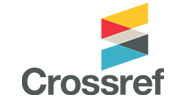1. 서 론
전 지구적으로 멸종위기에 처한 종 수는 매년 지속적으로 증가하고 있으며, 육지 표면의 약 83%는 인간 활동의 영향으로 인해 멸종률이 기하급수적으로 증가하여 지구 역사상 여섯 번째 대멸종이 진행되고 있다 (Chapin et al. 2000;Sanderson et al. 2002;Kerr and Deguise 2004). 국내에는 약 58,000여 종의 생물종이 서식하고 있으며, 환경부에서는 “야생생물 보호 및 관리에 관한 법률 시행규칙 (개정 2022.12.9)”을 근거로 멸종위기 야생생물 I급 (자연적 또는 인위적 위협으로 인해 개체수가 크게 감소하여 멸종위기에 처한 야생생물) 68종, 멸종위기 야생생물 II급 (자연적 또는 인위적 위협으로 인해 개체수가 크게 감소하고 있어 가까운 장래에 멸종위기에 처할 우려가 있는 야생생물) 214종을 지정하여 관리 및 보호하고 있다 (Kang and Kim 2022).
포유강 (Mammalia), 우제목 (Artiodactyla), 소과 (Bovidae), 산양속 (Naemorhedus)에 속하는 산양 (long-tailed goral; Naemorhedus caudatus)은 세계자연보전연맹 (International Union for Conservation of Nature and Natural Resources, IUCN)에서는 취약종 (Vulnerable, VU)으로 등재되어 있으며, 멸종위기에 처한 야생동·식물의 국제 거래에 관한 협약 (the Convention on International Trade in Endangered Species of Wild Fauna and Flora, CITES) 부속 서 I에 속하여 국제적으로 보호받고 있다 (Choi et al. 2015;Bragina et al. 2020). 국내에서는 환경부와 문화재청에서 멸종위기 야생생물 I급 (1998년), 천연기념물 (1968년)로 각각 지정하여 관리 및 보호하고 있다 (Choi et al. 2015;Jang et al. 2020). 산양은 한반도, 중국 북동부, 러시아 동부 등 주로 동북아시아에 걸쳐 분포하고 있으며, 국내에서는 설악산, 양구, 화천, DMZ, 울진, 삼척 등 고도가 높은 산림 및 암벽 지대를 중심으로 분포하고 있다 (Choi et al. 2015;Weber et al. 2018). 주로 가을~겨울철에 짝짓기하여 봄~여름에 보통 1개체의 새끼를 출산하며, 이동성이 적어 한 번 정착하면 정주하는 특성이 있고 주로 소나무류, 참나무류, 산딸기류, 산뽕나무 등을 섭식하는 1차 소비자 (초식자)로서 생태계의 생물다양성 유지에 중요한 역할을 하는 것으로 보고된 바 있다 (Cho 2013;Cho et al. 2014;Park et al. 2018;NPRI 2022). 국내에 약 1,000개체의 산양이 서식하고 있는 것으로 추정되며, 설악산은 약 300개체 이상이 분포하는 남한의 최대 핵심 서식지로 알려져 있어 설악산 산양 개체군의 보전 및 관리가 매우 중요하다 (Cho et al. 2014;Kim et al. 2023). 겨울철 폭설에 의한 개체수 감소는 빈번하게 발생하고 있으며, 특히 1964~1965년에 폭설로 인해 수 천마리의 산양이 포획되어 개체수가 급감하였다 (Won 1967). 그리고 2010년에는 울진에서 약 3개월 간 24마리가 죽은 채로 발견되었으며, 최근 2023년 12월 ~2024년 2월 겨울철 설악산에서도 집단 폐사가 발생하였다 (Park and Hong 2021). 기후변화로 인한 이상기후가 진행되고 있는 현시점에서, 폭설에 취약한 산양의 보전을 위한 노력이 필요한 실정이다.
국내 산양을 대상으로 무인센서카메라 및 GPS (Global Positioning System)를 이용한 개체수 추정, 행동권 파악 및 서식지 적합성 평가와 같이 주로 서식 실태 연구와 계통학적 위치, 유전적 다양성에 관한 연구가 다수 수행되었다 (Yoo et al. 2008;Cho et al. 2014;Choi et al. 2015;NPRI 2022). 또한, 한반도에 서식하는 산양의 강원도 북동부 (설악산, 고성, 화천, 양구, 인제, 양양) 개체군과 남부 (삼척, 울진) 개체군 간 유전적 분화 수준이 밝혀진 바 있으며 (Choi et al. 2015), 최근에는 도심지역에서 발견되는 산양의 분변시료를 대상으로 분자 수준에서 종동정과 성염색체 유전자를 이용한 성판별 및 microsatellite 마커를 이용한 개체수 추정 (Kim et al. 2023), SRY 유전자 (Sex-determining region Y) 염기서열 분석을 통한 부계 계통 및 유전적 다양성 분석 등의 연구가 수행되었지만 (Ahn et al. 2023), 산양 개체군의 보전 및 관리를 위한 집단유전학 (보전유전학)적 연구는 여전히 미미한 실정이다.
포유류의 경우 현장 조사 및 직접 포획을 통한 모니터링의 한계점이 있어 이를 보완하기 위하여 카메라 트래핑 (camera trapping, CT), 환경 DNA (environmental DNA, eDNA)와 같은 방법을 이용하여 생태 모니터링 연구가 수행되고 있으며 (Choi et al. 2023;Park et al. 2024), 타겟종의 유전자 분석을 위해서는 비침습적 유전자 모니터링 기법이 활용되고 있다 (Schwartz et al. 2007;Rodgers and Janečka 2013). 비침습적 시료는 생물에게 직접적으로 상해를 입히지 않고 종, 개체, 성별까지 식별할 수 있고, 이를 통해 생태적 특징을 이해할 수 있으며, 특히, 포획하기 어려운 종의 경우 더욱 유용하다 (Mondol et al. 2009;Moran- Luis et al. 2014;Bhandari et al. 2020). 그중 분변시료의 경우 DNA의 양이 적고, 질이 좋지 않아 microsatellite 유전자형 오류를 범할 수 있어 반복 실험을 통한 검증이 필요하다 (Navidi et al. 1992;Miquel et al. 2006;Ramón-Laca et al. 2015). 하지만 반복 실험을 통한 유전자형 검사는 비용과 시간이 많이 들기 때문에, 이를 보완하기 위하여 실험 과정에서 타겟종 이외의 DNA 추출 최소화, 중합효소연쇄반응 (polymerase chain reaction, PCR) 억제제의 최소화, 유전자형이 검증되고 짧은 길이와 적은 수의 반복수를 갖는 타겟 종의 특이적인 마커를 이용할 수 있다 (Broquet et al. 2007;Jang et al. 2020;Kim et al. 2023).
우리나라 야생 산양 최대 서식지인 설악산의 개체군을 대상으로 유전적 다양성을 평가하고 개체군 크기 추정 및 병목현상을 검증한 결과, 설악산 남설악 (오색) 일대에 최소 30개체 이상 서식하고 있으며, 한국 남부 개체군보다 높은 다양성을 나타내었다. 또한, 개체군 병목현상을 겪지 않은 것으로 추정되며, 따라서 이와 같은 결과를 토대로 고유 유전자형 발굴 및 유전체 정보 구축을 위한 산양 유전자원 특별보호구역으로서 설악산 지정 필요성을 제안한 바 있다 (Jang et al. 2020). 그러나 설악산국립공원 산양 개체군의 생태·유전적 중요성에도 불구하고 설악산 서식지 내 아집단 간 유전적 다양성 및 개체군 구조, 개체군 연결성을 면밀히 평가한 바 없다. 따라서 설악산국립공원 내 전체 산양 개체군을 대상으로 1) 한반도 남한 및 설악산 산양의 계통학적 위치/특성을 구명하며, 2) 설악산 내 개체군 간 유전적 다양성과 유전적 분화도 및 개체군 구조를 평가하여 개체군 서식지 연결성을 파악하고, 3) 설악산 일대 산양 개체수를 예측함으로써 설악산국립공원 개체군의 생태·진화·유전적 관점에서의 안정성 평가를 통해 산양의 보전 및 관리를 위한 과학적 기초자료를 제공하고자 하였다.
2. 재료 및 방법
2.1. 연구대상 지역
연구대상지인 설악산국립공원은 1970년에 제 5호 국립공원으로 지정되었으며, 1982년 국내 최초로 유네스코 (UNESCO) 생물권보전지역으로 설정되었다 (Lee et al. 1997). 강원특별자치도 속초시, 인제군, 양양군, 고성군 등 4개 시군에 걸쳐 총 400.027 km2의 면적을 이루고 있으며, 식물, 포유류, 조류 등 14개 분류군에서 총 3,047종이 서식하고, 그중 산양, 수달, 삵, 담비 등의 법정보호종이 서식하고 있는 중요 서식지이다 (NPRI 2020, 2021). 국내 3대 산양 최대 서식지 (DMZ 및 주변, 울진-삼척, 설악산국립공 원)에 포함되며, 총 4곳이 (흑선동, 화채능선, 미시령, 저항 령; 27.33 km2) 산양을 대상으로 국립공원특별보호구역이 지정되었다 (NPRI 2020).
2.2. 연구 방법
2.2.1. 시료 채취
장수대 (Jangsudae, JSD), 저항령 (Jeohangryeong, JHR), 백담 (Baekdam, BD), 오색 (Osaek, OS), 한계령 (Hangyeryeong, HGR) 5개 아집단과 그 외 개체군 (others)들을 대상으로 2019년 6월, 2022년 3~10월, 2023년 4~5월에 걸쳐 162개의 분변과 털 시료를 확보하였다 (Fig. 1). 시료 채집 시 개체번호, 채집장소, 채집날짜, 위치좌표 (GPS) 정보 등 데이터베이스를 작성하였으며, 확보한 시료는 유전자 분석 전까지 -20°C에 냉동 보관하였다.
2.2.2. Genomic DNA 추출
분변과 털 시료 모두 DNeasy Blood and Tissue Kit (Qiagen, Germany)를 이용하여 genomic DNA를 추출하였다. 분변시료는 lysis buffer를 이용하여 겉면을 용해시킨 후, 20 μL의 Proteinase K (Qiagen)를 첨가한 후 Multithermshaker H5000-H-E (Benchmark, USA)를 이용하여 56°C 에서 약 24시간 용해한 후 프로토콜 가이드라인에 따라 genomic DNA를 추출하였다. 추출한 genomic DNA의 농도와 순도는 NanoDrop One (Thermo Scientific, USA)을 이용하여 측정하였으며 PCR (polymerase chain reaction) 증폭 실험 전까지 -20°C에 냉동 보관하였다.
2.2.3. 미토콘드리아 DNA (mitochondrial DNA, mtDNA) 염기서열 확보
계통지리학 및 집단유전학적 분석을 위하여 mtDNA의 cytochrome b (cyt b) 유전자와 control region (CR) 부위를 분자마커로 PCR을 수행하여 증폭하였다. MtDNA cyt b의 경우, 우제목에 속하는 노루 (Capreolus pygargus), 고라니 (Hydropotes inermis argyropus), 염소 (Capra hircus), 산양 (N. caudatus)의 cyt b 염기서열을 이용하여 이전 연구에서 기개발된 프라이머를 이용하였으며 (Jang et al. 2020), CR은 소 (Bos taurus)와 산양 (N. caudatus) 염기서열을 이용하여 개발된 프라이머를 이용하였다 (An et al. 2010a). 사용된 primer-pairs의 정보는 다음과 같다.
-
Cyt b - FW (Art.F) (5ʹ-CCCCATCAAAYATCTCATCAT-3ʹ) RV (Art.R) (5ʹ-TCGACTGGYTGKCCTCCAATTC-3ʹ)
-
CR - FW (Cytb up) (CACCCCAGCAAACCCACTCAGCACACCCCCTCAC) RV (NH16129) (CATTAAATAGCTACCCCCAGTTA)
PCR 반응은 10× Dream Taq Green buffer (Thermo Scientific Inc., USA) 1.5 μL, 2.0 mM dNTPs (Bio Basic Inc., Canada) 1.5 μL, 10 pmol forward/reverse primers 0.5 μL, 0.1~0.2 units Taq DNA polymerase (Thermo Scientific Inc., USA) 0.2 μL, template DNA 1 μL (2.19~191.53 ng μL-1) 및 멸균된 증류수 9.8 μL를 혼합하여 총 15 μL의 부피로 2720 thermal cycler (Applied Biosystems, USA) 기기를 이용하여 수행하였다. PCR 증폭 조건은 94°C에서 3분 동안 초기 변성 (pre-denaturation) 후 94°C에서 45초간 변성 (denaturation), 54°C (CR)와 57.5℃ (cyt b)에서 45초간 결합 (annealing), 72°C에서 1분간 신장 (extension) 반응을 40회 반복하였으며, 이후 72°C 10분으로 최종 신장 (final extension) 반응을 수행하였다. 이후 2% agarose gel 전기영동을 통해 증폭이 확인된 PCR 산물은 Exonuclease I (New England BioLabs, USA) 0.4 μL, Shrimp Alkaline Phosphatase (rSAP) (New England BioLabs, USA) 1.6 μL, PCR 산물 8 μL를 혼합하여 37°C에서 15분, 85°C에서 15분 동안 정제 (purification) 과정을 거친 후 ABI 3730xl automated DNA sequencer (Applied Biosystems, USA)를 사용하여 forward primer를 이용하여 염기서열 분석을 수행하였다.
확보한 염기서열 데이터는 미국유전자은행 (National Center for Biotechnology Information, NCBI) BLAST (Basic Local Alignment Search Tool) search를 이용하여 산양의 DNA 추출 여부 확인 및 염기서열 길이 정보를 확인 하였으며, 산양으로 확인된 염기서열은 Geneious Prime® 2023.2.1. (Biomatters Ltd, Auckland, New Zealand)을 이용하여 염기서열 편집 및 정렬하여 단상형 (haplotype)을 결정하였다.
2.2.4. 핵 DNA microsatellite PCR
산양 특이적인 핵 DNA microsatellite 좌위를 증폭하기 위하여 기개발된 primer-pairs인 SY58, SY48, SY71, SY76을 이용하였으며, 각각의 forward primer에 형광염색 (FAM, HEX)을 한 후 실험에 사용하였다 (An et al. 2005, 2010b). PCR 반응은 AccuPower® PCR PreMix Kit (Bioneer, Korea)에 10 pmol forward/reverse primers 1.5 μL, template DNA 1 μL (2.19~191.53 ng μL-1) 및 멸균된 증류수 16 μL를 혼합하여 총 20 μL의 부피로 2720 thermal cycler (Applied Biosystems, USA) 기기를 이용하여 수행하였다. PCR 증폭은 94°C에서 5분 동안 초기 변성 반응 후, 94°C에서 45분간 변성, 56~65°C에서 45초간 결합, 72°C에서 1분간 신장 반응을 40회 반복하였고, 72°C에서 10분간 최종 신장 반응을 수행한 후 2% agarose gel 전기영동을 통해 증폭된 PCR 산물을 확인하였다. 각각의 microsatellite의 절편 크기 (fragment sizes)는 GENEMAPPER v5.0 (Applied Biosystems, USA)을 이용하여 ROX-500 bp size standard 크기와 비교하여 genotyping을 수행하였다.
2.2.5. 계통유연관계 분석
MtDNA를 이용하여 국내외에 서식하는 산양 개체군과의 계통유연관계를 파악하기 위해 NCBI에 등록된 산양의 cyt b 유전자 (D32191, DQ459334, EU259095-259117, U17861)와 CR의 염기서열 (MT084798-MT084804, EU259152-EU259176)을 모두 포함하였으며 (An 2006;An et al. 2010a;Jang et al. 2020;Kim 2021), 진화계통수 (phylogenetic tree)는 MEGA-X (Kumar et al. 2018) 프로그램을 이용하여 Neighbor Joining (NJ) 및 Maximum Likelihood (ML) 방법으로 1,000회 반복 검증 (bootstrap)을 수행하였다. 계통수 분석을 위해 mtDNA cyt b의 경우 계통학적으로 산양속과 가장 가까운 염소 (C. hircus; D84201)와 양 (Ovis aries; D84205)을 외군 (outgroup)으로 사용했으며, mtDNA CR의 진화계통수에서는 바바리양 (Ammotragus lervia; FJ207522)을 이용하였다 (Arai et al. 1997;Hassanin et al. 2009;Xiong et al. 2013). 단상형 간의 진화적 유연관계를 파악하기 위해 HAPSTAR ver. 0.7 (Teacher and Griffiths 2011) 프로그램을 이용하여 단상형 네트워크 분석을 실시하였다.
2.2.6. 유전적 다양성 및 구조
설악산 산양 개체군의 유전적 다양성을 평가하기 위해 단상형 정보는 ARLEQUIN v3.5.1 (Excoffier and Lischer 2010)을 이용하여 단상형 개수 (number of haplotypes, NH), 단상형 다양도 (haplotype diversity, H) 및 염기서열 다양도 (nucleotide diversity, π) 지수를 계산하였으며, 개체군 간의 개체수 차이를 보정한 유전적 다양성 지수인 단상형 풍부도 (haplotype richness, HR)는 CONTRIB v1.02 (Petit et al. 1998) 프로그램을 이용하여 개체군별 산출하였고, 기타 시료들 (others)은 유전적 다양성 분석에서 제외하였다. 국내 및 설악산 내 개체군들 간의 유전자 흐름 (gene flow) 정도를 평가하기 위해 ARLEQUIN을 이용하여 유전적 분화도 (FST) 수치를 계산한 후, p 값을 Bonferroni 보정 하였다. 또한 FST 수치를 기반으로 BARRIER v2.2 (Manni et al. 2004)를 이용하여 설악산 내 개체군 간 유전자 확산을 저해하는 유전적 장벽을 예측하여 유전적 격리 개체군을 추정하였다.
Microsatellite의 유전적 다양성은 4개의 마이크로세틀라이트 마커별 대립유전자 (allele)를 결정한 후, GENE POP v4.3 (Rousset 2008) 프로그램을 이용하여 개체군별 대립유전자 개수 (number of alleles, NA), 이론상 예측 이형접합도 (expected heterozygosity, HE), 실제 관측 이형접합도 (observed heterozygosity, HO)를 계산하였고, 또한 무작위교배 및 근친교배/이계교배 (FIS) 등 교배체계를 파악하기 위해 하디와인베르크 평형테스트 (HWE) 분석을 수행하였다. 개체군별 분석 시료 수 차이를 보정하는 유전적 다양성 수치인 대립유전자 풍부도 (allelic richness, AR)는 FSTAT v2.9.3.2 (Goudet 2002) 프로그램을 이용하여 계산하였다.
설악산 내 산양 개체군의 유전적 구조는 STRUCTURE v2.3.4 (Evanno et al. 2005) 프로그램을 이용하였으며, 개체군 간 유전적 상관관계 분석은 각 마커별 대립유전자 빈도를 이용하여 주성분 분석 (Principal Coordinates Analysis, PCA)을 수행하였으며, GenAlEx 6.502 (Peakall and Smouse 2006)를 이용하였다. 설악산 산양 개체 식별 및 개체수를 추정하기 위해 GIMLET (Valière 2002) 프로 그램을 이용하여 마커별 개체 간 유전자형 기반 동일 개체 출현 확률 (probability of identity, PID) 및 동일 부모 개체를 가진 개체 출현 확률 (probability of identity-siblings, PIDsib)을 계산하여 개체 동일성 검사를 하였다.
3. 결과 및 고찰
3.1. 한국 산양의 계통학적 위치 및 특성
MtDNA의 cyt b 유전자의 염기서열을 확보하기 위해 분변시료로부터 추출한 DNA의 PCR 증폭 효율과 염기서열 변이율을 고려하여 설악산 내 산양 57개 시료로부터 816 bp의 염기서열을 확보하고, 이를 이용하여 남한 (설악산) 산양의 계통학적 위치 및 특성을 평가하기 위해 NCBI에 기등록된 산양의 염기서열 (남한 23, 러시아 1, 중국 1, 인도 1, 일본 1)과 함께 계통유연관계를 분석한 결과, 한반도 남한 산양은 2개의 단상형을 갖는 것으로 확인되었다 (H01, H02) (Table 1, Fig. 2) (NPIFWC 2024). 한반도 산양은 러시아 산양 계통과 단계통 (monophyly)을 형성하며 가장 가까운 계통유연관계를 나타내었으며, 단상형 네트워크 분석 결과, 한반도의 단상형인 H01은 러시아 계통과 최대 11 개의 돌연변이를 나타내어 이는 약 1.3%의 유전적 차이를 가지고 있었다 (Fig. 2B). 이러한 결과는 cyt b 유전자를 이용한 계통학적 상태를 평가한 이전 연구 결과와 유사하게 확인되었으며, 한국과 러시아에 서식하는 산양은 공동조 상으로부터 가장 최근에 진화 분기하여 계통학적으로 가장 유사함을 의미한다 (Kim 2021). 또한, 한국과 러시아의 산양은 형태학적 특성이 유사하지만, 중국과 러시아의 산양 간에는 형태적으로 유의한 두개골의 차이를 나타내어 형태적 및 유전적 차이를 고려한 분류학적 위치를 재평가 할 필요가 있을 것으로 판단된다 (Min et al. 2004). 설악산 내에서 저항령 개체군만 유일하게 H02 계통을 나타내었으며, 다른 모든 개체군은 H01 계통으로 진화하여 H02 계통은 저항령 고유의 계통으로 확인되었다 (Fig. 2C). 하지만 분석에 이용한 시료 수가 적고, 변이가 적기 때문에 추가 시료 확보 및 마커 개발을 통한 보완 분석이 필요할 것으로 생각된다.
설악산 산양의 계통학적 위치를 평가하기 위하여, DNA 의 양과 질 및 PCR 증폭 효율에 의해 116개 시료로부터 mtDNA의 CR 염기서열을 이용한 28개 단상형 (592 bp) 을 확보하였으며, NCBI에 기등록된 32개 국내 분포 산양의 CR 염기서열 (고성 4, 동해 1, 삼척 1, 설악산 7, 양구 2, 양양 1, 에버랜드 9, 울진 1, 인제 6)과 함께 계통수 분석을 수행하였다. 한반도 내 산양은 2개의 분기군 (clade)을 형성하였으며, 설악산 고유 계통 (고유 단상형; N=23)은 확인되었으나, 별도의 분기군을 형성하지는 않았다 (Table 1, Fig. 3A). 설악산 저항령과 강원도 양구 개체군에서 확인된 H08, H09 단상형만이 Clade 2에 포함되었다. 설악산에서 확인된 28개 단상형과 32개의 NCBI 자료를 함께 네트워크 분석한 결과, 총 32개의 단상형이 확인되었으며, 계통수와 유사하게 2개의 분기군을 형성하였다 (Fig. 3B). 설악산 개체군은 23개의 고유 계통 (H01, H03, H06, H07, H08 등) 을 가지고 있지만, 타 지역 개체군과 계통이 혼재되어 있었다. 다수의 고유 계통이 설악산 내 개체군에서 확인된 결과는 이 지역이 남한 산양 진화의 최대 핵심 서식지임을 의미한다 (Jang et al. 2020;NPRI 2022). 또한, 한국에 서식하는 산양은 2개의 계통으로 구성되는데 저항령과 에버랜드 개체군이 서로 같은 분기된 계통을 나타낸 이유는 에버랜드 개체군은 폭설로 인해 저항령에서 구조된 개체군이기 때문에 동일한 계통을 나타낸 것으로 판단된다 (Choi et al. 2015).
3.2. 설악산 산양 개체군의 유전적 다양성 및 구조
MtDNA cyt b 유전자를 이용하여 유전적 다양성 분석 결과, 설악산 57개 시료로부터 2개의 단상형이 확인되었으며, 장수대, 백담, 오색 및 기타 개체들은 오직 1개의 단상형 (H01), 저항령 아집단은 2개의 단상형이 관찰되었다 (Table 1, Fig. 2). 설악산국립공원 내 cyt b 유전자는 총 2개의 단상형이 확인되어 매우 낮은 다양성을 나타내었는데, 이는 분석에 이용된 개체수가 적어 추가 시료 분석이 필요할 것으로 판단된다. mtDNA CR 유전적 다양성 분석 결과, 총 116개체로부터 28개의 단상형이 확인되었으며, 장수대, 저항령, 백담, 오색, 한계령 아집단들과 기타 개체들은 각각 8, 9, 10, 12, 2, 8개의 단상형을 가져 오색 아집단이 가장 많은 단상형을 가지고 있었다 (NH=11) (Table 1, Fig. 3). 설악산 전체 개체군의 단상형 다양도 (H)와 염기서열 다양도 (π) 각각 0.866, 0.007로 확인되었으며, 각 아집단별 단상형 다양도 범위는 0.400 (한계령)~0.924 (오색), 염기서열 다양도는 0.000 (한계령)~0.009 (저항령)로 확인 되었다. 지리적으로 산포된 기타 개체들을 제외한 나머지 5개 아집단을 대상으로 유전적 다양성 지수인 단상형 풍부도 (HR) 값의 범위는 1.00 (한계령)~3.30 (오색)으로 오색 아집단이 가장 높은 미토콘드리아 다양성을 나타내었고, 백담이 가장 낮은 다양성을 나타내었다. 고유 단상형 수 (PH)는 장수대와 백담 아집단 4개, 저항령 아집단 5개를 나타내었고, 오색 아집단은 가장 높은 단상형 풍부도를 나타내고 가장 많은 6개의 고유 단상형을 가지며, 한계령 아집단은 고유 단상형이 관찰되지 않았다 (Table 1). 핵 DNA 4개 microsatellite 마커를 이용한 유전자 분석 결과, 대립유 전자 풍부도 (AR)는 백담 (4.12), 기타 (3.65), 한계령 (3.53), 오색 (3.49) 순으로 높게 확인되었으며, 백담 1개, 기타 개체들은 8개의 고유 대립유전자 (PA)를 가지고 있었다 (Table 2). 기타 개체들을 제외한 3개 아집단은 관측치 이형접합도 (HO)가 예측치 이형접합도 (HE)보다 작거나 유사하고, 근친교배계수 (FIS)가 양수로 확인되어 개체군 내 근친교배의 가능성을 시사한다 (Table 2). NCBI에 기등록된 32개의 산양 CR 염기서열 (설악산 30개체, 에버랜드 9개체, 인제 6개체, 양구 7개체, 울진 7개체, 고성 8개체)과 함께 유전적 다양성 분석 결과, 설악산 내 개체군은 설악산 외 지역 개체군보다 더 높은 단상형 풍부도를 나타내며 (Mann- Whitney U, p<0.05), 설악산 개체군은 총 23개의 고유 단상형이 진화한 것으로 확인되었다 (Fig. 4). 설악산 개체군이 다른 지역 개체군에 비해 더 높은 유전적 다양성을 나타내며, 이전 설악산 (장수대, 남설악 [오색]) 개체군을 대상으로 mtDNA CR 염기서열을 이용한 유전적 다양성 분석 결과와 비교 시 (H=0.64; Choi et al. 2015) (H=0.78; Jang et al. 2020), 본 연구 대상 개체군이 상대적으로 높은 다양성을 나타내었으며 (H=0.87; Table 1), 이는 본 연구에서 더 많은 설악산 내 개체군 및 개체를 대상으로 분석했기 때문일 것으로 추정된다. 또한, 상대적으로 높은 수준의 유전적 다양성과 다수의 설악산 고유 계통이 확인된 결과는 설악산국립공원 산양 개체군이 한반도 남한 산양의 진화역사적, 생태적 최대 핵심 서식지임을 의미한다 (Jang et al. 2020;NPRI 2022;Kim et al. 2023).
집단유전학 분석을 기반으로 산양 개체군의 유전적 연결성을 파악하기 위하여 5개 아집단 (장수대, 저항령, 백담, 오색, 한계령)을 대상으로 mtDNA CR (840 bp)을 이용한 유전적 분화도 (FST) 분석 결과, FST 값은 -0.04 (장수대-오색)~0.12 (저항령-한계령)의 범위로 확인되었다 (Fig. 5A). 개체군 간 대부분의 유전적 분화도가 낮게 확인되어 개체군 간 유전적 교류가 원활하게 일어나고 있음을 의미하지만, 저항령 아집단은 한계령 아집단과 유의한 유전적 분화도 (FST=0.12)를 나타내었으며, 백담 아집단과도 유전적 분화가 확인되었다 (FST=0.08). 저항령 지역은 설악산 내 다른 지역과 달리 지질학적 측면에서 물리적으로 가파르게 격리되어 산양의 이동이 제한되어 상대적으로 높은 유전적 분화가 나타난 것으로 예측된다 (Chae and Yun 2019). 또한 5개 아집단 간 유전적 장벽을 분석한 결과, 저항령, 오색과 백담, 장수대, 한계령 사이에 유전적 장벽의 존재 가능성을 확인하였다 (Fig. 5B). 설악산 내외의 유전자 확산을 평가하기 위하여 NCBI에 등록된 염기서열과 함께 유전적 분화도를 분석한 결과, 설악산과 설악산 외 개체군 간 FST 값은 0.04 (설악산-울진)~0.72 (한계령-고성) 범위의 유전적 분화도를 나타내었으며, 울진-고성은 0.909로 가장 높은 유전적 분화가 확인되었다 (Fig. 5A). 설악산 내 산 양의 유전적 구조를 파악하기 위하여 microsatellite 유전자형을 기반으로 STRUCTURE 분석을 수행한 결과, K=2 (cv value=3.132)로 확인되었으며, 2개의 유전적 구조가 특정 유전적 그룹을 형성하지 않고 하나의 단일 유전적 구조를 나타내었다 (Fig. 6A). 또한, PCA 분석 결과에서도 아집단들은 유전적으로 구분되지 않는 양상을 보였다 (Fig. 6A). 따라서 설악산 산양 개체군은 강원도 북동부와 남부 개체군보다 원활한 연결성을 가져 유전적 교류가 비교적 원활하게 발생하고 있어 유사한 유전자 풀 (gene pool)을 공유하고 있음을 시사한다 (Choi et al. 2015). 또한, 이전 연구와 동일하게 강원도 북동부 개체군이 같은 유전적 구조를 가지지만, 저항령은 유전적 장벽 (genetic barrier)에 의한 유전적 분화의 가능성이 확인되어 서식지 환경 특성과 함께 비교 분석이 필요할 것으로 판단된다.
3.3. 설악산 산양 개체군의 최소 개체수 추정
설악산 내 산양 개체군의 개체수를 추정하기 위하여 microsatellite 유전자형을 비교·분석하였다. 본 연구에서 이용된 비침습적 (분변) 시료를 이용한 유전자 분석은 DNA의 오염과 낮은 품질 및 PCR 억제제로 인한 한계점이 존재하여 재현성을 위해 반복 실험을 통한 검증이 제안되었지만 (Navidi et al. 1992;Bayes et al. 2000;Miquel et al. 2006), 분변시료로부터 산양 DNA를 추출하고, DNA 오염을 최소화하기 위하여 몇 가지 실험적 방법을 적용했다. 단일 실험의 한계점을 극복하기 위하여 먼저, 산양의 순수 DNA를 추출하고, PCR 억제제를 배제하기 위하여 분변 시료의 겉면만을 사용하여 장벽의 상피세포에서 내인성 DNA를 추출하였다 (Rutledge et al. 2009;Ramón-Laca et al. 2015). 또한, 길이가 짧은 microsatellite 마커 (93~205 bp)를 이용하여 품질이 낮은 분변시료 DNA의 PCR 증폭 효율을 증가시켰으며, 산양 혈액에서 추출한 DNA를 함께 실험에 이용해 분변시료의 유전자형을 함께 비교하여 결정 하였다. 더욱이, 전체 microsatellite 대립유전자형을 이용한 null allele 빈도는 0.051로, 이는 유전자형 오류율이 5.1%임을 의미하며 매우 낮은 수치이다 (Dakin and Avise 2004). 이전 연구 (null allele 빈도: 0.199)보다 오류율이 더 낮아 데이터의 신뢰도를 검증할 수 있었다 (Jang et al. 2020).
83개의 시료에 대한 비침습적 분석에서 4개 microsatellite 대립유전자형은 매우 낮은 수준의 동일성 (PID: 6.3× 10-8; PIDsib: 1.4×10-3)을 나타내었다 (Table 3). 이는 무작위적으로 선택된 두 개체가 서로 다른 유전자형을 가질 가능 성이 높음을 시사하며, 즉 4개의 microsatellite 유전자형 중 단 하나의 다른 유전자형을 가지면 서로 다른 개체임을 의미한다 (Waits et al. 2001;Jang et al. 2020). 또한, 4개의 microsatellite 유전자형 데이터를 이용하여 동일 개체를 식별한 결과, 개체군 내 동일한 유전자형을 갖는 시료는 확인되지 않았으며 오색과 기타 개체군 간에 동일한 유전자형을 갖는 4개 시료가 확인되었다. 따라서 전체적으로 최소 81개체 이상이 서식하는 것으로 추정되며 그중 오색 25개체, 한계령 6개체, 백담 13개체, 기타 39개체 중 오색 개체군과 중복되는 2개체를 제외한 37개체 이상이 서식하는 것으로 보인다. 하지만 설악산국립공원은 국내 산양 개체군의 최대 서식지임에도 불구하고 2024년도에 기후변 화로 인한 집단 폐사가 발생했으며, 인위적 인간 활동 (오색 케이블카 설치) 등에 의한 추가 교란이 우려되는 실정이다. 본 연구 결과에서 오색 개체군은 설악산 내 다른 지역 개체군과 비교적 낮은 유전적 분화도 (FST= -0.04~0.08) 를 나타내어, 유전적 장벽은 아직 확인되지 않았지만, 지속적인 교란발생 시 급격한 개체수 감소와 같은 병목현상 (bottleneck)에 의해 유전적 부동 (genetic drift) 및 근친교배의 영향으로 유전적 다양성 감소 및 유전자 단일화를 초래할 수 있다 (Landergott et al. 2001;Horreo et al. 2023). 최근 기존에 보고되지 않았던 산양의 서식지가 발견되었고 이후 모니터링을 통한 개체군의 확산을 확인한 바 있으며, 이러한 새로운 서식지 및 대체 서식지의 발견은 산양 개체군 보전에 중요할 수 있다 (Jo et al. 2018;Kim et al. 2023). 따라서 산양 개체군의 보전 및 개체수 증진을 위한 지속적인 모니터링과 생태 및 유전적 특성을 고려한 보전 및 복원 방안 마련이 필요하다. 하지만 본 연구에서는 몇 가지 한계점이 존재하였다. 첫째, 분석 표본 크기와 DNA 품질 - 비침습적 시료를 이용한 DNA는 품질이 낮아 PCR 효율이 낮았으며, 이에 따라 아집단 간 분석에 이용된 시료 수의 차이가 존재했다. 따라서 비침습적 시료의 손상을 최소화하기 위한 겨울철 시료 확보와 DNA 추출의 효율성을 증가시킬 수 있는 방법 및 반복 실험을 통한 결과 검증이 필요할 것이다. 둘째, 유전적 마커 변이의 제한 - mtDNA 의 cyt b 유전자 마커의 경우, 2개의 단상형만이 확인되어 유전적 변이가 제한되었으며, 이는 시료 수를 증가시키고, 전장 유전체 (whole genome) 기반으로 유전적 변이를 고려한 새로운 마커 (예; 단일염기다형성 [single nucleotide polymorphism, SNP]) 개발이 필요할 것이다. 셋째, 환경 및 생태 데이터 부족 - 본 연구 결과는 설악산 내 아집단 간 원활한 유전적 교류가 발생하고 있음을 확인하였지만, 환경적 요인과의 상호작용을 함께 고려해야 할 것으로 판단된다. 따라서 서식지 내 지리적, 기후적 특징과 유전적 분화 간의 연관성 분석, 서식지 적합성 모델링을 통한 장기적인 보전 전략 수립이 필요할 것으로 판단된다. 본 연구는 우리나라 산양 최대 서식지인 설악산 개체군의 유전적, 생태적 특성을 함께 고려한 보다 통합적 관점에서 보전 관리 방안 마련을 위한 유전적 자료를 제공하는 데 의의가 있다.
적 요
본 연구는 멸종위기종인 산양의 국내 최대 핵심 서식지인 설악산국립공원 개체군을 대상으로 비침습성 시료를 이용하여 계통학적 위치를 평가하고, 유전적 다양성 및 유전적 구조를 구명하며, 최소 개체수를 추정하기 위하여 집단유전학적 연구를 수행하였다. 국내에 서식하는 산양은 러시아 산양과 가장 가까운 계통유연관계를 나타냈으며, 설악산 고유 계통의 존재를 확인하였다. 또한, 설악산 외 지역보다 설악산 내 개체군이 더 높은 유전적 다양성을 나타내어 설악산국립공원이 산양 개체군의 진화·생태적으로 중요하고 보전 가치가 있는 핵심 서식지임을 확인하였다. 설악산 내 개체군 간 낮은 유전적 분화를 가지고, 하나의 유전적 구조를 나타내어 비교적 원활한 유전자 확산이 이루어지고 있음을 시사하지만, 저항령 개체군은 서식지 환경 특성에 의한 다른 개체군과 상대적으로 높은 유전적 분화의 가능성이 확인되어 서식지 환경 특성을 고려한 추가적인 연구가 필요하다. 유전자형을 기반으로 설악산 내 산양의 최소 개체수를 추정한 결과, 비칩습성 시료에 대한 유전자형은 매우 낮은 수준의 동일성을 나타내었으며, 본 연구에서 사용된 시료만을 대상으로 분석한 결과 동일한 유전자형을 갖는 개체를 제외한 최소 81개체 이상이 서식하고 있는 것으로 추정된다. 하지만 최근 이상기후로 인한 대규모 집단 폐사와 인간 활동으로 인해 추가적으로 개체 수가 감소할 수 있어 주기적인 모니터링을 통한 효과적인 보전 및 복원 방안을 마련해야 할 것으로 판단되며, 본 연구의 결과는 보전 방안 마련을 위한 생태적 및 유전적 기초 데이터를 제공할 수 있을 것으로 기대한다.





















